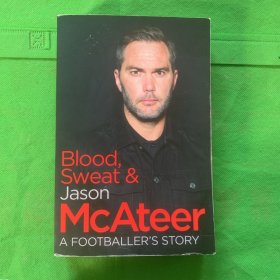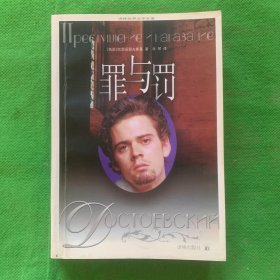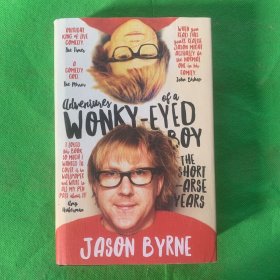
Before the Deluge: A Portrait of Berlin in the 1920's(品相自定)
¥ 254 九品
仅1件
辽宁大连
认证卖家担保交易快速发货售后保障
作者Otto Friedrich 著
出版社HarperCollinsUS
出版时间1995-10
装帧平装
货号44
上书时间2020-10-17
- 最新上架
商品详情
- 品相描述:九品
图书标准信息
- 作者 Otto Friedrich 著
- 出版社 HarperCollinsUS
- 出版时间 1995-10
- ISBN 9780060926793
- 定价 162.20元
- 装帧 平装
- 页数 464页
- 正文语种 英语
- 【内容简介】
- The Birds of Berlin PROLOGUETherefore let us found a city here And call it "Mahagonny," Which means "city of nets." . . . It should be like a net Stretched out for edible birds. Everywhere there is toil and trouble But here we'll have fun .... Gin and whiskey, Girls and boys . . . And the big typhoons don't come as far as here.--BERTOLT BRECHT"Would you like me to show you?" the old man asks. Professor Edwin Redslob is more than old; he is ancient, a survivor of almost a century of violence. He was already in his mid-thirties when Germany's broken armies came straggling home from the First World War, and now he is eighty-six, tall and smiling and white-haired. He can hardly see through the thick lenses that fortify his eyes, but he totters across his dusk-darkened studio, past the window that opens onto the white-blossoming apple trees in the garden, and then he bends over a wooden cabinet that contains his treasures.As an art expert, he joined the Interior Ministry more than fifty years ago to help the nascent Weimar government create a new image for the new Germany, and he began by commissioning a young Expressionist painter named Karl Schmidt-Rotluff to redesign the most fundamental image, the German eagle. Now he bends over a shallow drawer, grunts and fumbles through a sheaf of pictures, and finally pulls forth the one he wants: the Weimar eagle. He holds it high, gazing at it with affection. The eagle boasts all the pride and dignity of its imperial ancestors, black wings spread wide, beak hungrily open, but it has other qualities as well. It seems less grim than the traditional eagle; indeed, it seems almost cheerful, afriendly eagle. "A marvelous thing," says Dr. Redslob. "But the number of insults that this picture provoked--you wouldn't believe it."It is a mistake, perhaps, to attach too much importance to symbols. In the Berlin Zoo, there is a real eagle--two of them, in fact--and we can stand outside the cage and regard the imprisoned beast that we consider the German symbol, and our own. At the base of an artificial tree, there lies a pool of rather dirty water, and one of the eagles slowly lowers its claw-feet into the pool and begins picking at the bloody carcass of a rabbit that has been left there to satisfy its appetite for carrion.In the tranquillity of the Zoo, there are cages for every variety of giant bird-huge hawks wheeling restlessly within the limits of their confinement, flamingos folding and unfolding themselves, and even some mournful marabous, which stand in stoic silence and stare back at their visitors. Wandering loose in the Zoo, ignoring the elephants and the rhinoceroses, there are dozens of mallards, always two by two, the green-headed male trailed by his speckled brown and white mate. Nor do they remain in the Zoo. They float among the swans in the canals outside the Charlottenburg Palace. They roam among the chestnut trees in the Tiergarten. They nibble at weeds in the Havel River. "You don't have ducks like that in American cities?" a Berliner asks in surprise. "Here they are everywhere."Berlin, more than almost any other great city, is a city of birds. One hears not only sparrows chirping in the midst of the traffic on the Kurfurstendamm but wood thrushes singing in the Glienicker Park. One sees species one never expects to find in cities-magpies andnightingales and a black-feathered, yellow-beaked diving grebe known as a "water chicken." Even at the Hilton Hotel, the traveling businessman wakes to the sound of peacocks screeching in the night.One reason for this variety of birds is that Berlin has always been what jean Giraudoux called "no city of gardens but] a garden itself." Though it is still the largest metropolis between Paris and Moscow, it also has 835 farms, and almost 200 waterways, and more than half of its land is devoted to parks, forests, and gardens. There are wild boars roaming in the woods of Berlin, and herds of deer, and there are flocks of sheep grazing on the outer runways of Tempelhof airport. The air is clear and cool, a little sharp.Another reason for the birds of Berlin is that the Berliners care for them, feed them and watch over them. In the southern district of Lichterfelde, in the shadow of a gigantic white research hospital that has been heavily financed by the Rockefeller Foundation, a pink-cheeked old gentleman welcomes a visitor by leading the way out into the back yard so that one can watch him take a shovelful of sunflower seeds from a metal box and spray it on the lawn. One of the green-headed mallards rushes forward to snap up the seeds, and the old man points to a linden tree where a dozen long-tailed doves sit cooing in anticipation. "Turkish doves," he says. "They come from the Himalayas, and they always stop here for their food."The birds represent, generation after generation, a kind of permanence in a city that has never known the century-old traditions of a Paris or a London. Born in the thirteenth century in the mud and swamps at the junction of the Spree and Havel rivers,Berlin remained a minor crossroads during the grand reigns of Venice and Amsterdam and even, for that matter, Hamburg. As late as 1860, Henry Adams described it as "a poor, keen-witted provincial town, simple, dirty, uncivilized, and in most respects disgusting." Only in the latter part of the nineteenth century, with industrialization and the coming of the railroads, and then the political triumphs of Bismarck, did Berlin grow into the great metropolis of Central Europe (its population, which was 198, ooo in 1815, soared to 826,000 by the time the Empire was founded in 1871, and to 2,529,000 in 1900).
- 【作者简介】
- Otto Friedrich, born in 1929 in Boston, majored in history at Harvard, where he received a degree magna cum laude in 1948. He went to Europe and worked for the Stars & Stripes in Germany and United Press in Paris and London. Returning to New York, he served as an editor at the Daily News, Newsweek, and the Saturday Evening Post. He was managing editor at the Post from 1965 until the magazine's suspension in 1969. Friedrich's account of the Post's last years, Decline and Fall, appeared in 1970 and was hailed as `a classic of American journalism.' It won the George Polk Award as that year's best book on the press. Among his other books are Before the Deluge: A Portrait of Berlin in the 1920s (1972); Going Crazy: A Personal Inquiry (1976); The End of the World: A History (1982); City of Nets: A Portrait of Hollywood in the 1940s (1986); Glenn Gould. A Life and Variations (1990); Olympia. Paris in the Age of Manet (1992); and The Kingdom of Auschwitz (1994). Friedrich also wrote two novels and, in collaboration with his wife, nine children's books.
点击展开
点击收起
— 没有更多了 —


















以下为对购买帮助不大的评价